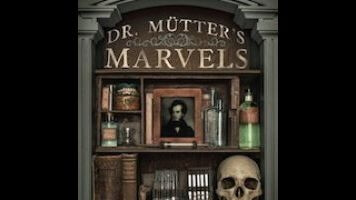Dr. Mütter’s Marvels is narrative non-fiction at its best

Dr. Mütter’s Marvels invariably invites comparisons to Erik Larson’s popular 2003 book, Devil In The White City. Author Cristin O’Keefe Aptowicz, also an award-winning poet, draws from the same narrative non-fiction tradition that Larson did, but where Devil In The White City forced a thriller out of dual storylines, Aptowicz forges a more natural narrative out of 15 years of research about a man who changed modern medicine.
Dr. Thomas Mütter is probably best known to contemporary readers by way of his namesake museum in Philadelphia, which houses the many medical oddities the doctor collected during his years as a surgeon. Aptowicz shuns easy sensationalism and focuses on the real stories: the man himself, why he became so interested in these oddities, and how he shaped modern medicine, from plastic surgery to doctor-patient relationships to a then-new belief in pre- and post-surgical care.
Though the biographical portrait of the colorful and flamboyant surgeon—he apparently had quite expensive taste in fashionable clothing, even as a child, and as an adult, he became known for his theatrical medical lectures—is moving enough, it’s the details surrounding his life that prove most interesting. Mütter’s medical practice grew out of unfortunate circumstances: In the mid-1800s, factory work was unregulated and dangerous, often leaving workers with chemically derived disfigurements (look up phossy jaw if you must), and women worked in open-fire kitchens wearing layers upon layers of clothing; when the inevitable happened, the women were left with grotesque deformities on top of their burned skin. In these workers, Mütter found patients whose willingness for surgical experimentation revealed their agonized desperation—and formed the basis for his practice. Seeking the people nobody else would treat, and offering them the risky surgeries nobody else would attempt, Mütter brought a then-unprecedented empathy to medicine on top of creating new surgical techniques. He began practicing medicine before it was regulated, and before medical anesthesia had even been discovered. (The Knick, for comparison’s sake, takes place about 60 years later, when germ theory was firmly established but no gloves were used during surgery; the technique described in episode three, though never mentioned by name, is the Mütter flap). Aptowicz examines these details with a historian’s eye but a poet’s touch, resulting in a narrative that’s compelling but not hyperbolic.
Aptowicz is refreshingly careful with her language, keeping the narrative speculation to a minimum, painting most of her scenery with the weight of her research. She revels in the details, but largely lets the reader draw their own conclusions. The result is an approachable history of a man and of a time period that does exactly what narrative non-fiction should do: answers the questions the reader never realized they had.